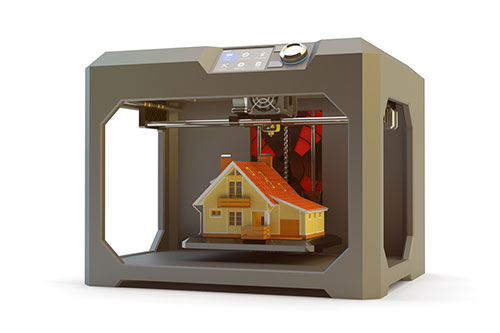There’s been a lot of talk about the power of 3D printing, but will it affect the way you build homes? Here is how this innovative technology could make the building process faster, cheaper and less wasteful.
Big Changes Coming
According to Realtor.com, 3D printing technology will be a disruptive force in the construction industry, transforming the housing market and revolutionizing the world as we know it. If this all sounds like hyperbole to you, consider the fact that many companies already use 3D printing to create construction materials. What’s more, companies have also used 3D printing to create large structures, including buildings and houses. According to Realtor.com, one Chinese company was even able to 3D print a 4,305-square-foot building on-site in just 45 days.
While we are still years away from a 3D printing revolution, there is good reason to believe one lurks just over the horizon. When you consider the following benefits that come with 3D printing, it’s clear why companies are investing so much money in the burgeoning technology.
- Lower supply costs: Back in 2014, the CEO of China-based construction company WinSun predicted that 3D printing would save companies up to 50 percent in supply costs, thanks to a drastic reduction in material waste. In the coming years, this could prove to be a godsend for construction managers with access to the technology.
- Faster build times: As construction companies realize the full potential of 3D printing, they will be able to erect homes within days instead of months. 3D printed construction is also expected to drastically reduce the need for skilled labor, resulting in cheaper homes that extend the American dream of homeownership to a whole new group of buyers who could never otherwise afford their own properties.
- Better execution: 3D printing will allow builders to improve project planning, clarify client expectations and reduce the risk of human error.
- Greener homes: The advent of 3D printing is expected to reduce the need for lumber in a home’s framework, resulting in a great advancement for “green” construction firms and a troubling development for the lumber industry.
- Greater creativity: By shortening the road between whimsical concept to livable reality, 3D printing will eventually allow builders to create radical new housing designs that boast brand-new architectural features.
When Is it Coming?
While 3D printing technology has come a long way in recent years, experts believe it will be a couple decades before it can yield sophisticated homes buyers would be eager to live in. This is mostly due to current-day limitations related to how materials are fed into devices.
Still, while 3D printers could only yield hard plastic two years ago, they can now create soft plastics and pulp-based wood. In time, builders are liable to see lower prices for building materials, along with expanding on-site capabilities. To stay viable, however, builders will need to be willing and able to adapt. With this in mind, you don’t need to run out to buy a printer for your construction business; but you should definitely be monitoring its advance in the industry.
You can add valuable selling points to your new builds and reduce your risk with 2-10 Structural Warranties, learn more today!








